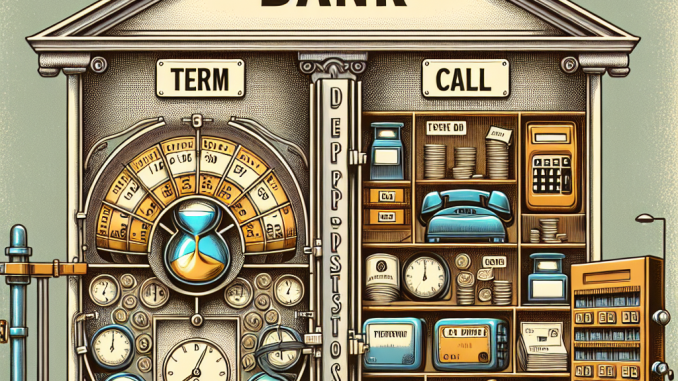
Many folks are well-acquainted with checking accounts, but when it comes to choosing between term deposits and call deposits, the waters get murkier. Term deposits lock your cash away for a set stretch while earning interest, whereas call deposits provide more fluid access, often demanding heftier minimum balances. Let’s unpack the essentials of both these financial tools so you can pick the best fit.
The Nitty-Gritty of Term Deposits
Term deposits, sometimes dubbed time deposits, are a staple offering from banks and credit unions alike. They come with three defining characteristics that set them apart:
- Locked-in, assured interest rates that don’t waver.
- Interest accrual continues steadily until a pre-agreed maturity date rolls around.
- Withdrawal restrictions: pulling funds before maturity typically triggers penalties.
For most, certificates of deposit (CDs) are the poster child of term deposits. It’s not uncommon to spot APYs as juicy as 5.35% on some CD offerings. A notable variant—no-penalty CDs—permits early cash-out without the usual fee, though this convenience usually comes with slightly lower yields compared to top-tier CDs. Still, such accounts often outperform regular savings accounts in returns.
Snapshot: Term Deposit Highlights
- Competitive interest rates that fluctuate with term length.
- Minimum deposits typically ranging from zero up to $2,500.
- A fixed maturity date marking when your principal and interest become accessible.
- Limited access to funds; early withdrawals invite fines.
Understanding Call Deposits
Call deposits offer a different flavor of banking, combining attractive interest rates with flexibility. Unlike their term deposit cousins, these accounts don’t hold your money hostage for a set timeframe. Your funds remain accessible anytime, making them a more liquid, agile option.
Often, you’ll find that call deposits carry steep minimum deposit thresholds—think $10,000 or more—but this is balanced by potentially higher rates. Some accounts feature tiered rates that climb as your balance grows, so the juicier your stash, the better your earnings.
Think of call deposits as a hybrid: they pay better than your garden-variety checking account and let you dip in whenever you please—no penalties, no fuss.
Key Call Deposit Features
- Interest earnings that might vary according to your account balance.
- High minimum deposit requirements, often $10,000+.
- Funds can be accessed on demand without incurring penalties.
- Highly liquid—close kin to checking accounts.
Both types of accounts are typically provided through banks or credit unions, each catering to different financial goals and liquidity needs.
Did you know? According to recent banking statistics, the average term deposit interest rate in the U.S. hovered around 3.5% in 2023, while high-balance call deposits could earn upwards of 4.25%, depending on the institution and account terms.
Term Deposits vs Call Deposits: A Quick Comparison
| Interest Rate | Guaranteed; varies by term length | Variable; may depend on balance tiers |
| Minimum Balance | Usually $0 to $2,500 | Often $10,000 or higher |
| Access to Funds | Restricted until maturity; penalties for early withdrawal | Available anytime without penalties |
| Liquidity | Low | High, similar to checking accounts |
Which One Fits Your Financial Style?
Both term and call deposits represent smart upgrades from everyday savings accounts by offering enhanced interest returns. Deciding which suits you hinges largely on your appetite for locking away funds versus keeping them ready at your fingertips, the amount you’re willing to commit, and your desired yield.
Senior banking correspondent at Bankrate contributed to refining this overview.